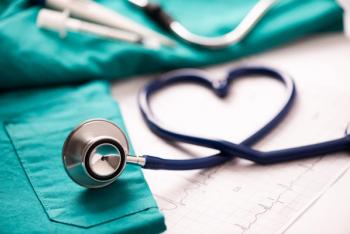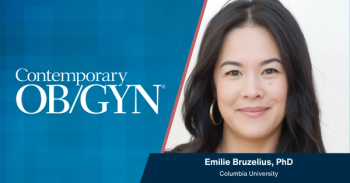
Support Your Bones with Healthy Habits
Unearthed skeletons from ancient times testify to the durability of bone long after other bodily tissue turns to dust. Living bone in the body, however, can lose mineral and fracture easily if neglected--a disorder called osteoporosis, or porous bones. One in two women and one in eight men over 50 suffer such fractures, including sometimes life-threatening hip fractures.
Unearthed skeletons from ancient times testify to the durability of bone long after other bodily tissue turns to dust. Living bone in the body, however, can lose mineral and fracture easily if neglected--a disorder called osteoporosis, or porous bones. One in two women and one in eight men over 50 suffer such fractures, including sometimes life-threatening hip fractures.
But during your preteen and teenage years, you can reduce your risk of fractured bones later in life with calcium-rich foods and physical activity.
Bone Behavior
Your body's 206 living bones continually undergo a buildup, breakdown process called remodeling.
The body starts to form most of its bone mass before puberty, the beginning of sexual development, building 75 to 85 percent of the skeleton during adolescence. Women reach their peak bone mass by around age 25 to 30, while men build bone until about age 30 to 35. The amount of peak bone mass you reach depends largely on your genes. Then gradually, with age, the breakdown outpaces the buildup, and in late middle age bone density lessens when needed calcium is withdrawn from bone for such tasks as blood clotting and muscle contractions, including beating by the heart.
"You can't do anything about the genes you're dealt," says Mona Calvo, Ph.D., a calcium expert for the Food and Drug Administration. "As a teenager, though, you can make the most of things you do control that can build your bones and help reduce the risk of fractures when you are older."
Supporting the skeleton with healthful habits now so it can support you later in life is especially important if you have an increased risk of osteoporosis--for example, if you're female or have a thin, small-boned frame. These habits are proper diet, exercise, and avoiding bone risks--lifestyle choices that are bad for bone, like smoking.
Eat Your Way to Strong Bones
The main mineral in bones is calcium, one of whose functions is to add strength and stiffness to bones, which they need to support the body. To lengthen long bones during growth, the body builds a scaffold of protein and fills this in with calcium-rich mineral. From the time you're 11 until you're 24, you need about 1,200 milligrams (mg) of calcium each day.
Adolescent bodies are tailor-made to "bone up" on calcium. Calvo says that with the start of puberty, "your body is at a higher capacity to absorb and retain calcium."
Bone also needs vitamin D, to move calcium from the intestine to the bloodstream and into bone. You can get vitamin D from short, normal day-to-day exposure of your arms and legs to sun and from foods fortified with the vitamin. Also needed are vitamin A, vitamin C, magnesium and zinc, as well as protein for the growing bone scaffold.
Mother Nature provides many foods with these nutrients. One stands out, however, as "almost a perfect package," according to Calvo. "Milk is rich in calcium and high-quality protein. Nearly all U.S. milk has vitamins D and A added. And it has magnesium and zinc."
Still, as excellent as milk is for bones, it and other dairy products are not the only foods that contain calcium. All groups in the Food Guide Pyramid, in fact, offer calcium sources--from the pyramid's grain-based foods that you need the most of, to the produce and high-protein groups in the middle, and even to the fats and sweets "use sparingly" group at the top. The importance of choosing calcium sources from the different food groups is that each group offers its unique package of other nutrients as well.
To learn how much calcium is in a food, you can read the food label's Nutrition Facts panel. Look for the "percent Daily Value" (%DV) set by FDA for calcium. The calcium DV is 1,000 mg. But if you are 11 to 24 years old, your growing bones need more--the recommended 1,200 mg. So, each day's calcium %DVs in the foods you eat should add up to 120 percent.
Because many foods are now fortified with calcium, your investigation of labels may turn up surprising sources. To identify foods with at least 10%DV of calcium per serving, FDA allows these terms on their labels:
20%DV or more: "High in Calcium," "Rich in Calcium," "Excellent Source of Calcium"
10% to 19%DV: "Contains Calcium," "Provides Calcium," "Good Source of Calcium"
10%DV calcium or more added: "Calcium-Enriched," "Calcium-Fortified," "More Calcium."
An easy daily plan is to drink a calcium source at every meal and eat one calcium food as a snack, says Ruth Welch, a registered dietitian with FDA.
If the lactose sugar in dairy products causes problems like gas, bloating or diarrhea, try
lactose-reduced or lactose-free milk. When fortified, these products can have up to 50%DV for calcium in one serving. Also available are lactase drops and tablets, which can help you digest dairy products like ice milk, yogurt, and cheese.
Get Enough Weight-Bearing Exercise
Growing bone is especially sensitive to the impact of weight and pull of muscle during exercise, and responds by building stronger, denser bones. That's why it's especially important when you're growing a lot to be physically active on a regular basis.
And as far as bone is concerned, Calvo says impact activity like jumping up and down appears to be the best. "But the important thing is to get off the couch and get moving at some activity. It really is a matter of 'Use it now, or lose it later'."
Such activities include sports and exercise, including football, basketball, baseball, jogging, dancing, jumping rope, inline skating, skateboarding, bicycling, ballet, hiking, skiing, karate, swimming, rowing a canoe, bowling, and weight-training. (See The Activity Pyramid.) And when your parents make you mow the lawn, rake leaves, or wash and wax the car, they're doing your muscles and bones a favor.
FDA's Welch adds, "Day-to-day activities that start in the teen years, like walking the dog or using stairs instead of elevators, can become life-long habits for healthy bones."
Avoid Bone Risks
Some habits in the teenage years can steal calcium from your bones or increase the need for it, weakening the skeleton for life.
Skipping meals is risky for bone, Welch says. In our three-meal-a-day society, skipping a meal may reduce by a third your chance of getting your 120%DV for calcium--simply by eliminating one occasion to eat.
Replacing milk with nondairy drinks like soda pop or fruit-flavored teas or drinks is another eating habit that prevents bones from getting the calcium and other nutrients they need.
In a survey comparing 1994 daily beverage intakes with those in the late 1970s, the U.S. Department of Agriculture found a switch from milk to other drinks among young people:
Milk drinkers among teenagers dropped from three-fourths to little more than half.
Two to three times more children and teenagers drank non-citrus fruit juices.
Teenage boys nearly tripled their intake of soft drinks, three-fourths of them drinking about 34 ounces; two-thirds of teenage girls drank 23 ounces.
Alcohol abuse and cigarette smoking can hurt bone. Calvo says, "Alcohol abuse can cause loss of calcium, magnesium and zinc in the urine. Many who abuse alcohol also have poor diets and malnourished, weaker bones." Cigarette smoke is also toxic to bone and can influence how much exercise you get because it affects your stamina, she says.
Eating disorders can weaken bone. The repeated vomiting in bulimia and extreme dieting in the appetite disorder anorexia can upset the body's balance of calcium and important hormones like bone-protective estrogen, decreasing bone density. And extreme exercising by young women with or without eating disorders can postpone or stop menstruation, when blood levels of estrogen are reduced.
Small Changes for Big Benefits
As a disorder of aging, osteoporosis may seem far away for worry when you're 15. But, small changes today for better bones tomorrow may be more important than you might guess.
Laura Bacharach, M.D., of Stanford University, wrote in Nutrition & the M.D. last year that
adolescents who make "even a 5 percent gain in bone mass can reduce the risk of osteoporosis by 40 percent." And this is in addition to "immediate benefits of feeling stronger and more fit now with these changes!"
Newsletter
Get the latest clinical updates, case studies, and expert commentary in obstetric and gynecologic care. Sign up now to stay informed.
















